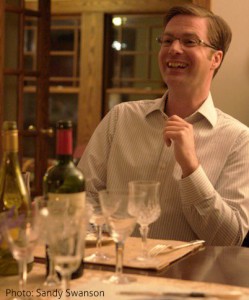
Christy Farnbauch
What Laundry Detergent Can Teach Us About Winning Audiences
Posted by Oct 07, 2011

Christy Farnbauch
A couple of years ago the makers of Gain laundry detergent, Proctor & Gamble (P&G), were looking for a way to better engage and win customers. They used web and social media tools to launch a “Sniff Contest."
They invited current and new Gain customers to purchase a bottle of detergent, open the cap, and sniff the scent. Then, customers were to visit the company’s website or Facebook page and write a brief story or upload a video about their experience with that bottle of detergent.
When I first heard about this request, I found it hard to believe that anyone would take the time to do this…for laundry detergent?
As it turns out, the campaign was wildly successful, resulting in over 300,000 stories, videos, and fans. P&G dubbed these people the “Gainiacs” and continues to engage them in a variety of ways to increase product sales.
Everybody loves to hear a good story. A powerful story is a critical tool for engaging and winning audiences – current and potential ticket buyers, class participants, board members, artists, and donors.
Read More






































